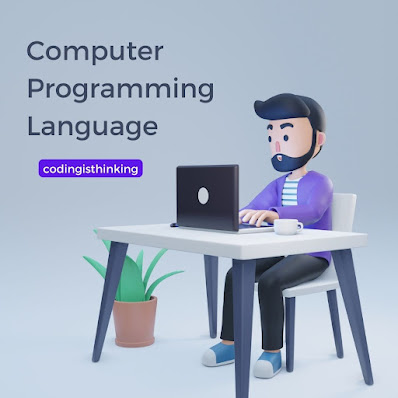Programming languages are essential tools for software developers to create and build programs and applications.
 |
| Computer Programming language |
With so many programming languages available, choosing the right one for a particular project can be daunting.
Each programming language has its own strengths and weaknesses, making it essential to understand the pros and cons of popular programming languages before deciding.
Python Python is a high-level, interpreted programming language widely used for web development, scientific computing, data analysis, artificial intelligence, and machine learning.
One of the main benefits of Python is its readability, which makes it easy for developers to write and understand code.
Other benefits include:
Pros:
- A high level of abstraction means that developers can write code more quickly and with fewer lines than in other programming languages.
- The extensive standard library includes pre-written modules for various tasks such as web development, data analysis, and more.
- Cross-platform compatibility means that Python code can run on different operating systems like Windows, Linux, and macOS.
Cons:
- Slower performance compared to lower-level languages like C++ and Java.
- Limited multi-threading support can lead to performance issues when running CPU-intensive tasks.
- Dynamic typing can lead to errors that may only be caught during runtime.
Java Java is a high-level, object-oriented programming language widely used for building enterprise-level applications, Android mobile applications, and web applications.
Java's popularity stems from its robustness, scalability, and platform independence.
Pros:
- Platform independence means that Java code can run on any platform with a Java Virtual Machine (JVM) installed, making it a highly portable language.
- A rich standard library includes pre-written modules for various tasks such as network programming, database connectivity, etc.
- Object-oriented programming (OOP) support enables developers to write reusable and maintainable code.
Cons:
- Relatively steep learning curve compared to other programming languages.
- Memory management can be challenging, leading to memory leaks and other issues.
- Slower performance compared to lower-level languages like C++.
C++: C++ is a high-level, object-oriented programming language widely used to build operating systems, games, and high-performance applications.
C++ is a superset of C, meaning it inherits many of C's features while adding support for OOP and other features.
Pros:
- High performance and low-level control make it an ideal language for developing applications requiring fast execution speeds and low-level control over hardware.
- Cross-platform compatibility means that C++ code can run on different operating systems like Windows, Linux, and macOS.
- Support multiple programming paradigms, including OOP, procedural, and generic programming.
Cons:
- Steep learning curve compared to other programming languages.
- Memory management can be challenging, leading to memory leaks and other issues.
- Complex syntax and language features can make it difficult for developers to write and maintain code.
JavaScript JavaScript is a high-level, interpreted programming language widely used for building web, server-side, and mobile applications.
JavaScript is the backbone of the modern web, and its popularity grows as new frameworks and libraries are developed.
Pros:
- Easy to learn, which makes it an ideal language for beginners.
- A rich ecosystem of libraries and frameworks, including jQuery, React, Angular, and more.
- Cross-platform compatibility means that JavaScript code can run on different platforms, such as web browsers, servers, and mobile devices.
Cons:
- It can be challenging to write scalable and maintainable code.
- Slower performance compared to lower-level languages like C++ and Java.
- Limited multi-threading support can lead to performance issues when running CPU-intensive tasks.
- Dynamic typing can lead to errors that may only be caught during runtime.
Conclusion Choosing the correct programming language for a project is critical for success.
Each programming language has its own strengths and weaknesses, making it essential to understand the pros and cons of popular programming languages before deciding.
Python is good for data analysis, scientific computing, and machine learning, while Java is ideal for enterprise-level and Android mobile applications.
C++ is best suited for operating systems, games, and high-performance applications, while JavaScript is essential for building web and server-side applications.
Finally, Ruby is an excellent choice for web development and automation scripts.
Ultimately, the choice of programming language depends on the project's specific requirements and the development team's skillset.
By understanding the pros and cons of popular programming languages, developers can make informed decisions and choose the correct terminology for their projects.